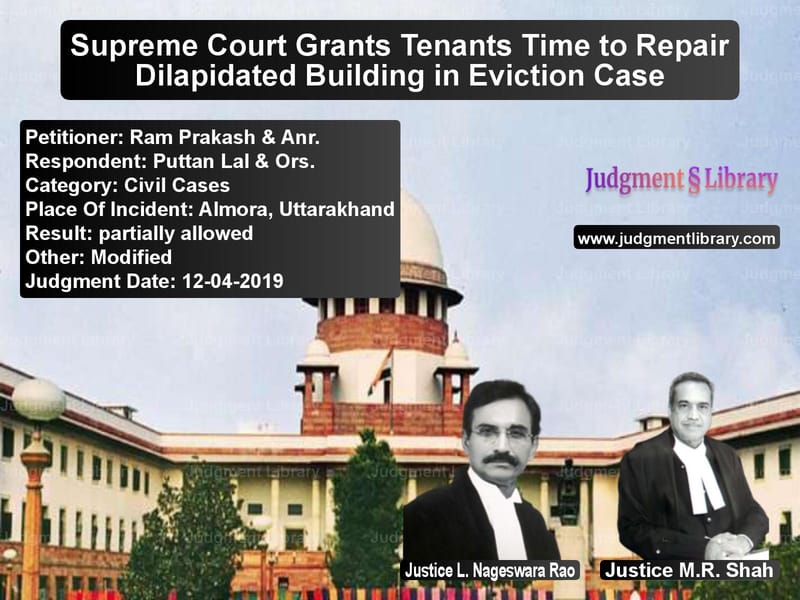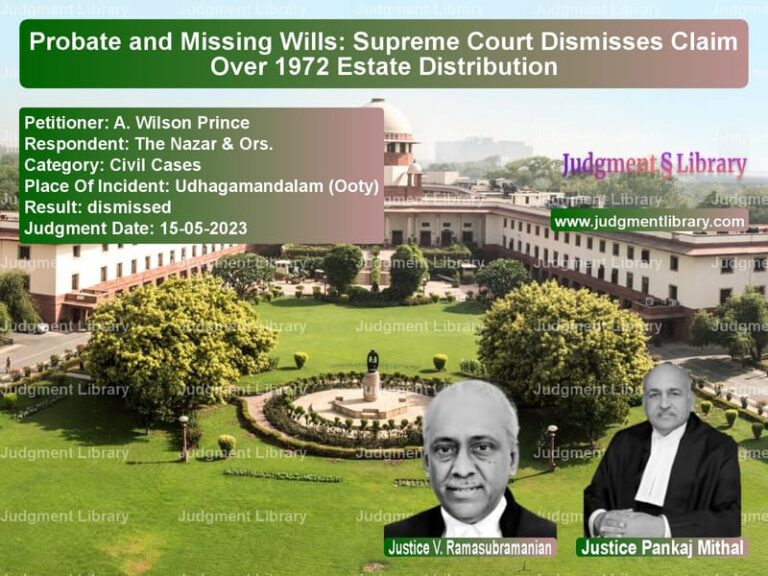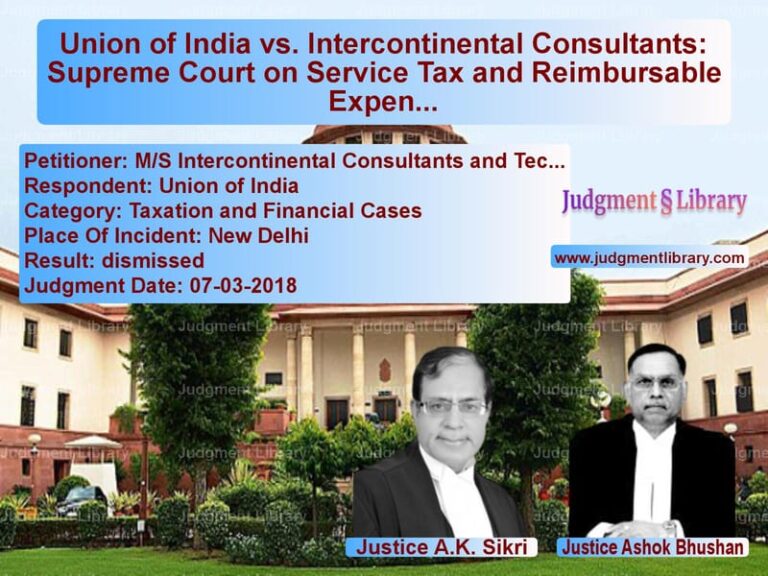Supreme Court Grants Tenants Time to Repair Dilapidated Building in Eviction Case
The Supreme Court of India, in its judgment dated April 12, 2019, ruled on an eviction dispute under the U.P. Urban Buildings (Regulation of Letting, Rent, and Eviction) Act, 1972. The case, Ram Prakash & Anr. vs. Puttan Lal & Ors., involved a long-standing tenancy dispute where the landlord sought eviction of the tenants, citing that the building was in a dangerous and dilapidated condition. The Supreme Court allowed the tenants to repair the building at their own expense instead of immediate eviction, balancing both parties’ interests.
Background of the Case
The dispute concerns a residential building in Almora, Uttarakhand, where the appellants, Ram Prakash and Roshan Lal, were tenants. The landlord, Puttan Lal, filed an application under Section 21(1)(b) of the U.P. Urban Buildings Act, seeking eviction, claiming the building was in a dilapidated state and required demolition and reconstruction.
The case went through multiple legal proceedings:
- 1996-1997: Nagar Palika, Almora, issued a notice stating the building was in a dilapidated condition.
- Prescribed Authority: Rejected the landlord’s eviction plea, stating the building was not in immediate need of demolition.
- 1998: Landlord filed an appeal before the District Judge, Almora.
- 2001: The District Judge upheld the decision, stating the structure was habitable.
- 2001-2014: Landlord moved the Uttarakhand High Court, which ordered the eviction.
- 2015: Supreme Court set aside the High Court’s order and remanded the case for fresh consideration.
- 2016-2017: The High Court, upon reconsideration, again ruled in favor of the landlord.
- 2019: Tenants appealed to the Supreme Court.
Arguments by the Appellants (Tenants)
- The tenants argued that the building was structurally sound and did not require demolition.
- They presented engineering reports stating that the structure could be made habitable with repairs.
- They expressed willingness to repair the building at their own cost without seeking rent adjustments.
Arguments by the Respondent (Landlord)
- The landlord argued that the structure was in imminent danger of collapse.
- They relied on a town planning expert’s report stating that demolition was necessary.
- They contended that the tenants had no legal right to resist eviction once the building was declared unfit.
Supreme Court’s Observations
- The Court noted that eviction laws must balance tenant rights and landlord interests.
- It acknowledged that Nagar Palika had declared the structure unsafe 24 years ago, but the building was still standing.
- The Court observed that the tenants were willing to bear repair costs, which suggested their commitment to maintaining the premises.
- It ruled that if repairs could make the building safe, there was no immediate need for demolition.
Final Judgment
- The Supreme Court granted the tenants six months to complete the repairs at their own cost.
- The expenses of the repairs would not be deducted from rent payments.
- After the repairs, the Town Planning Authority must inspect the building to determine its safety.
- If the structure remains unsafe after repairs, the landlord may proceed with fresh eviction proceedings.
Legal Implications
- This judgment ensures that tenants are not evicted without due process if structural repairs can make a building safe.
- It establishes that eviction under Section 21(1)(b) of the U.P. Urban Buildings Act must be supported by clear and updated structural assessments.
- The ruling sets a precedent for cases where tenants offer to bear repair costs instead of facing eviction.
Conclusion
The Supreme Court’s ruling in this case provides a balanced approach, protecting tenant rights while ensuring public safety. The judgment prevents unnecessary eviction when repairs can restore habitability. By allowing a structured review process, the ruling ensures that landlords and tenants engage fairly in disputes over dilapidated buildings.
Petitioner Name: Ram Prakash & Anr..Respondent Name: Puttan Lal & Ors..Judgment By: Justice L. Nageswara Rao, Justice M.R. Shah.Place Of Incident: Almora, Uttarakhand.Judgment Date: 12-04-2019.
Don’t miss out on the full details! Download the complete judgment in PDF format below and gain valuable insights instantly!
Download Judgment: Ram Prakash & Anr. vs Puttan Lal & Ors. Supreme Court of India Judgment Dated 12-04-2019.pdf
Direct Downlaod Judgment: Direct downlaod this Judgment
See all petitions in Landlord-Tenant Disputes
See all petitions in Damages and Compensation
See all petitions in Judgment by L. Nageswara Rao
See all petitions in Judgment by Mukeshkumar Rasikbhai Shah
See all petitions in partially allowed
See all petitions in Modified
See all petitions in supreme court of India judgments April 2019
See all petitions in 2019 judgments
See all posts in Civil Cases Category
See all allowed petitions in Civil Cases Category
See all Dismissed petitions in Civil Cases Category
See all partially allowed petitions in Civil Cases Category







